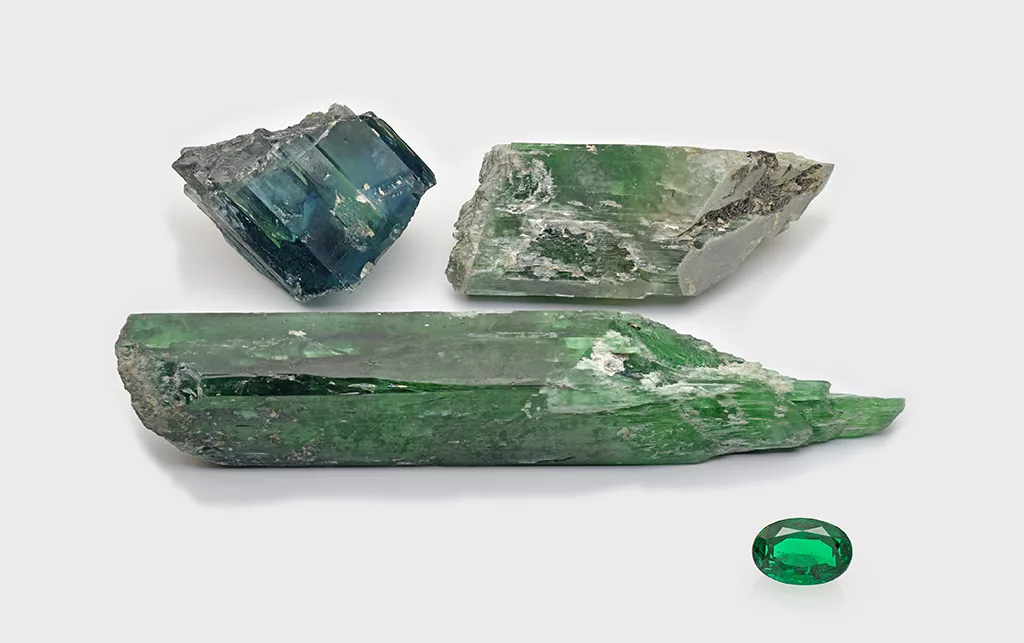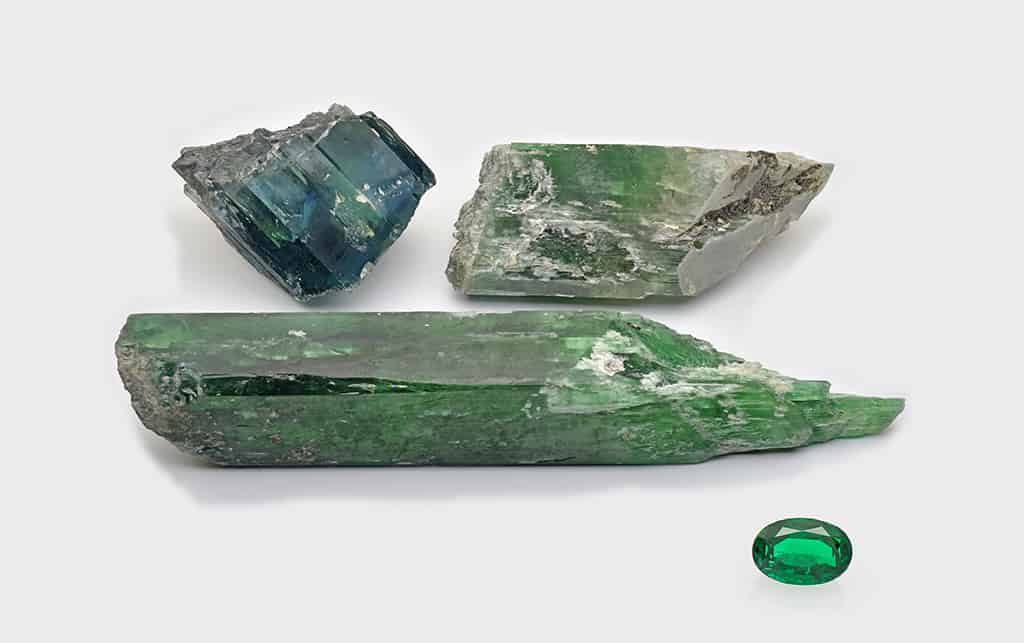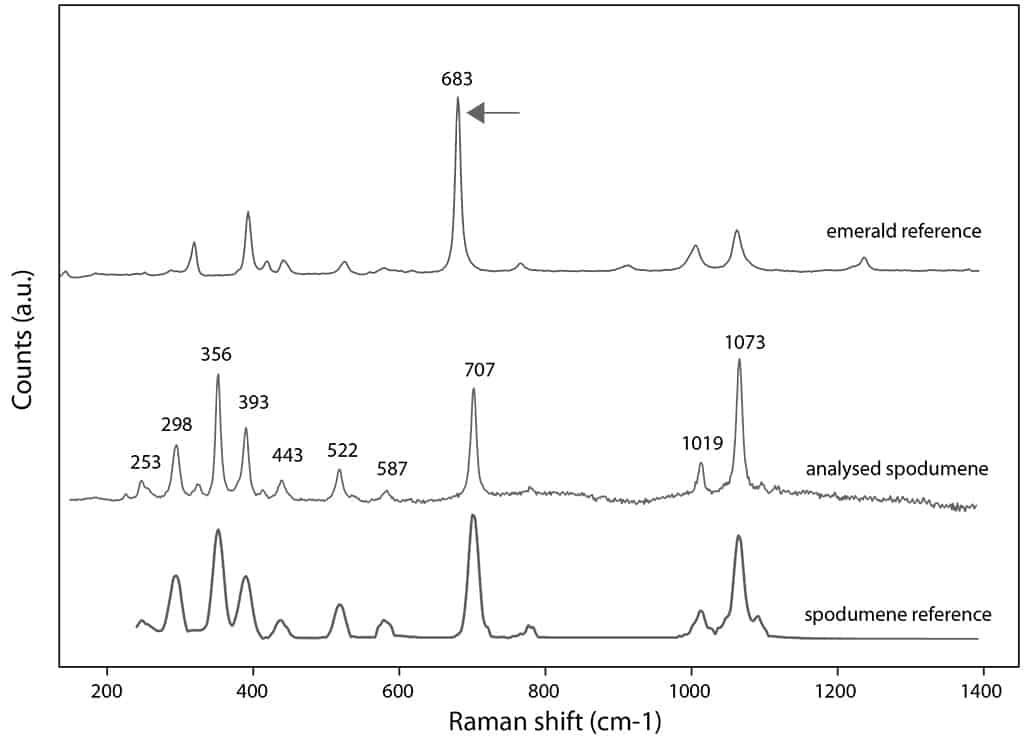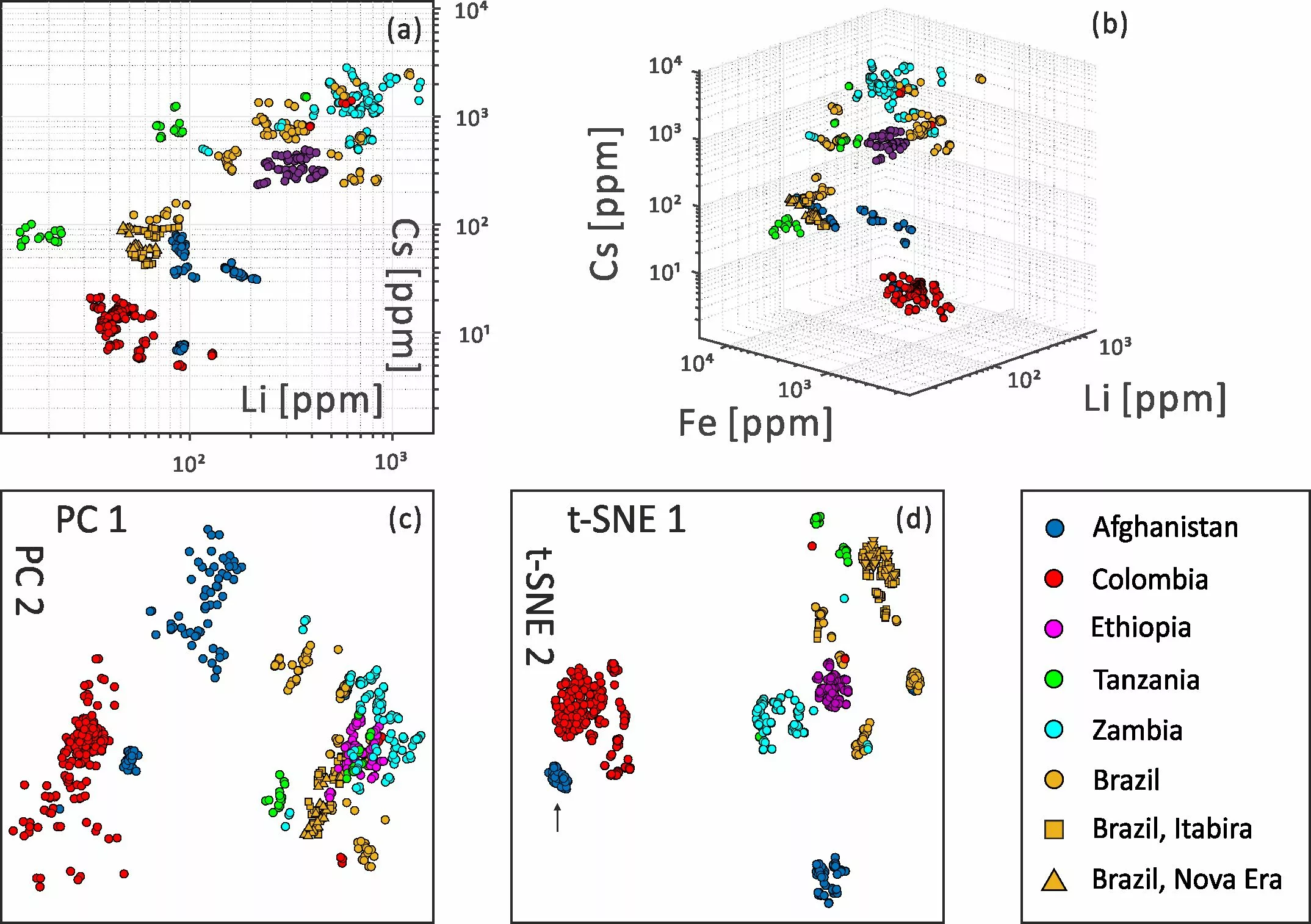
Green spodumene sold as emerald imitation

by Dr. M.S. Krzemnicki, first published in Facette 26 (May 2020)
By the end of 2019, we received three transparent crystal fragments of vivid green to greenish blue colour totaling a weight of 13 kg. These crystals reportedly came from a new find of ‘beryl’ in Pakistan and came along with reports declaring them to be emeralds of high value. If true, such a mesmerizing find could be a bonanza for the early birds, and therefore no time was lost after delivery from Peshawar to send us these stones for ID testing. Although SSEF does not issue any reports for rough items, we were still interested to check and analyze these announced wonders of nature.
Still, testing such large items is quite challenging, as no normal refractometer or hydrostatic balance would be able to handle such a giant. When carried on our heavy duty trolley, a first visual check already raised doubts and eyebrows alike. The crystals – as beautiful and gemmy as they looked – showed conspicuous orthogonal cleavage planes and rather orthorhombic crystal shape; as such definitively not matching to the properties of any beryl.
Given the dimensions and the etched surface of these crystals, our first choice for a definitive identification was quickly found by using Raman spectroscopy. This easy and straightforward analytical method registers the characteristic spectral ‘fingerprint’ of any substance (e.g. mineral or gemstone) which is caused by the inelastic scattering of light (e.g. laser beam) by the molecular structure of the analyzed substance. The result was crystal clear and confirmed our first assumptions (Figure 2). In fact, we had in our hands a nice selection of spodumene (lithium-bearing member of the pyroxene group), a mineral found in quite large specimens and quantities in Li-enriched pegmatites, namely along the Himalayan mountain range, and in many other localities worldwide.

The observed vivid green to greenish blue colour has to our knowledge only been reported from irradiated spodumene and is considered unstable when exposed to sunlight (Nassau 1994, Tay 2008, Bosshart et al. 2011, Liu et al. 2017). Based on the literature, we strongly presume that the analyzed spodumene crystals were intentionally irradiated (treated) to generate the vivid green colour with the aim to imitate emerald as far as possible. Unfortunately, such sudden gemmy finds often end in trouble and disappointment as in this case. Still, good to know that Pakistan is a real source of fine quality emeralds (e.g. Swat valley in Northern Pakistan) – but usually of distinctly smaller size.


